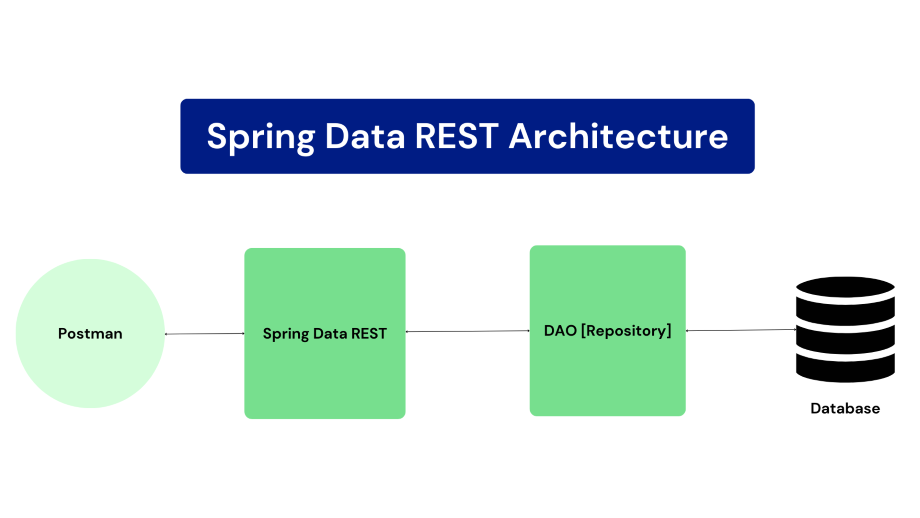The New Era of Java Concurrency: A Deep Dive into Virtual Threads
For decades, Java’s concurrency model has been built upon a solid but heavy foundation: platform threads. These threads, which are thin wrappers around operating system (OS) threads, have powered countless multi-threaded applications. However, this model has inherent limitations, especially in the age of microservices and cloud-native applications where handling tens of thousands of concurrent I/O-bound operations is the norm. Creating an OS thread for each task is resource-intensive and simply doesn’t scale. This has been a long-standing topic in Java concurrency news.
Enter Project Loom, a multi-year effort by the OpenJDK team to fundamentally rethink concurrency on the JVM. The flagship feature of this project, Virtual Threads (JEP 444), has finally graduated from preview and arrived as a standard feature in Java 21. This monumental release, a highlight of recent Java 21 news, ushers in a new era of high-throughput, lightweight concurrency. It allows developers to write simple, synchronous, blocking code that scales with incredible efficiency, effectively solving the scalability problem of the traditional thread-per-request model. This article explores this paradigm shift, diving deep into virtual threads, structured concurrency, and what it means for the entire Java ecosystem news landscape.
The Paradigm Shift: From Platform Threads to Virtual Threads
To appreciate the innovation of virtual threads, we must first understand the limitations of the model they are designed to improve upon. The core difference lies in how they are managed and what happens when they encounter a blocking operation.
Understanding Platform Threads
Platform threads are managed directly by the operating system. They are heavyweight structures that consume significant memory and require a context switch by the OS scheduler to be swapped in and out. Because the number of OS threads a system can handle is finite (typically in the low thousands), they are a precious resource. In a typical web application, when a thread blocks on an I/O operation (like a database query or a network call), it remains idle, holding onto its memory and OS resources, unable to do any other work. This leads to resource exhaustion under high load, forcing developers to resort to complex, asynchronous, and often harder-to-debug reactive programming models.
A classic server application might use a fixed thread pool to manage these scarce resources:
import java.util.concurrent.ExecutorService;
import java.util.concurrent.Executors;
import java.util.concurrent.TimeUnit;
public class PlatformThreadExample {
public static void main(String[] args) throws InterruptedException {
// A pool with a limited number of OS threads
try (ExecutorService executor = Executors.newFixedThreadPool(100)) {
for (int i = 0; i < 10_000; i++) {
int taskNumber = i;
executor.submit(() -> {
// Simulate I/O-bound work
System.out.println("Executing task " + taskNumber + " on thread: " + Thread.currentThread());
try {
Thread.sleep(1000); // Represents a blocking network call
} catch (InterruptedException e) {
Thread.currentThread().interrupt();
}
});
}
} // executor.close() is called automatically, which initiates a shutdown
}
}In this example, only 100 tasks can run concurrently. The other 9,900 tasks must wait in a queue for a thread to become available. This is a direct consequence of platform threads being a limited resource.
Introducing Virtual Threads
Virtual threads are a lightweight implementation of java.lang.Thread managed by the Java Virtual Machine (JVM), not the OS. Millions of virtual threads can be created without issue. The magic happens when a virtual thread executes a blocking I/O operation. Instead of blocking the underlying OS thread, the JVM “unmounts” the virtual thread from its carrier (the platform thread it was running on) and “parks” it. The carrier thread is now free to execute other virtual threads. Once the blocking operation is complete, the JVM “mounts” the virtual thread back onto an available carrier thread to resume its execution. This process is transparent to the developer.
This efficient scheduling makes virtual threads ideal for workloads with high concurrency and frequent I/O operations, which is a significant development in Java performance news.
Putting Virtual Threads into Practice: Code and Migration
Adopting virtual threads is remarkably straightforward, often requiring minimal changes to existing code. The familiar ExecutorService API has been updated to make this transition seamless.
Creating and Managing Virtual Threads
The recommended way to work with virtual threads is through the new factory method Executors.newVirtualThreadPerTaskExecutor(). This creates an ExecutorService that starts a new virtual thread for each submitted task. Unlike a cached thread pool, this executor doesn’t reuse threads because creating a virtual thread is incredibly cheap.
Let’s rewrite our previous example to handle 10,000 concurrent tasks efficiently:
import java.util.concurrent.ExecutorService;
import java.util.concurrent.Executors;
import java.util.concurrent.TimeUnit;
import java.time.Duration;
public class VirtualThreadExample {
public static void main(String[] args) {
// An executor that creates a new virtual thread for each task
try (ExecutorService executor = Executors.newVirtualThreadPerTaskExecutor()) {
for (int i = 0; i < 10_000; i++) {
int taskNumber = i;
executor.submit(() -> {
System.out.println("Executing task " + taskNumber + " on thread: " + Thread.currentThread());
try {
// Simulate a 1-second blocking I/O operation
Thread.sleep(Duration.ofSeconds(1));
} catch (InterruptedException e) {
// Handle interruption
}
System.out.println("Task " + taskNumber + " complete.");
});
}
} // executor.close() waits for all submitted tasks to complete
}
}When you run this code, you’ll notice that all 10,000 tasks appear to start almost immediately. The JVM manages this workload using only a small pool of carrier platform threads (by default, equal to the number of available CPU cores). This demonstrates the immense scalability of virtual threads for I/O-bound tasks. This is huge for developers following Spring news and Jakarta EE news, as frameworks like Spring Boot and Helidon are already integrating this feature to boost performance.
Migrating Existing Code
For many applications, migrating to virtual threads is as simple as changing one line of code: the ExecutorService instantiation. Code that uses the standard concurrency APIs like Future, Callable, and ExecutorService is largely compatible. This easy migration path is a key piece of Java wisdom tips news for teams looking to modernize their codebase without a complete rewrite, a stark contrast to the effort required to migrate from, say, Java 8 to Java 17.
Beyond Virtual Threads: Structured Concurrency
While virtual threads solve the “how” of running many tasks concurrently, they don’t solve the “what” of managing their lifecycle, especially error handling and cancellation. This is where another preview feature, Structured Concurrency (JEP 453), comes into play. It aims to simplify multithreaded programming by treating multiple tasks running in different threads as a single unit of work.
The Problem with Unstructured Concurrency

In traditional concurrency, when you start several tasks, they become “unstructured.” The parent thread launches them and often loses track of their lifecycle. If one task fails, it’s up to the developer to write complex and often brittle code to cancel its siblings and propagate the error correctly. This can lead to thread leaks and inconsistent application states.
Introducing Structured Concurrency
Structured Concurrency enforces a clear lifecycle. A group of concurrent tasks must complete before the main code block can continue. It introduces the StructuredTaskScope API, which ensures that if a task starts in a scope, its lifetime is confined to that scope.
Here’s an example of fetching user data and order history concurrently. If either operation fails, the other is automatically cancelled.
import java.util.concurrent.Future;
import jdk.incubator.concurrent.StructuredTaskScope;
public class StructuredConcurrencyExample {
// Represents a successful result or an exception
record Response(String user, String order, Throwable ex) {}
public static void main(String[] args) throws InterruptedException {
try {
Response response = fetchUserDataAndOrders();
System.out.println("Successfully fetched: " + response.user + " and " + response.order);
} catch (Exception e) {
System.err.println("Operation failed: " + e.getMessage());
}
}
static Response fetchUserDataAndOrders() throws InterruptedException {
// Create a scope that shuts down on the first failure
try (var scope = new StructuredTaskScope.ShutdownOnFailure()) {
Future<String> userFuture = scope.fork(() -> fetchUser());
Future<String> orderFuture = scope.fork(() -> fetchOrder());
// Wait for both tasks to complete or one to fail
scope.join();
scope.throwIfFailed(); // Throws exception if any subtask failed
// If we reach here, both tasks succeeded
return new Response(userFuture.resultNow(), orderFuture.resultNow(), null);
}
}
static String fetchUser() throws InterruptedException {
System.out.println("Fetching user...");
Thread.sleep(100); // Simulate network latency
// Uncomment to simulate failure
// if (true) throw new RuntimeException("User service unavailable");
return "User Details";
}
static String fetchOrder() throws InterruptedException {
System.out.println("Fetching order...");
Thread.sleep(150); // Simulate network latency
return "Order History";
}
}This code is much cleaner and more robust. The StructuredTaskScope guarantees that we either get results from both tasks or an exception, with no risk of leaking threads. This is a revolutionary piece of Java structured concurrency news that will change how we write concurrent business logic.
Best Practices and Performance Considerations
While virtual threads are powerful, they are not a silver bullet. Understanding when and how to use them is crucial for optimal performance.

When to Use Virtual Threads
- I/O-Bound Tasks: The ideal use case. This includes microservices, web applications, and any task that spends most of its time waiting for network or disk I/O.
- High-Throughput Applications: Applications needing to handle thousands or millions of concurrent connections.
For CPU-bound tasks that perform intensive calculations, traditional platform threads are still the better choice, as you typically want to limit the number of such threads to the number of available CPU cores.
Common Pitfalls to Avoid
- Do Not Pool Virtual Threads: Pooling is an anti-pattern. Virtual threads are cheap to create and should be instantiated for each task. The whole point is to avoid the limitations of a pool.
- Beware of Thread Pinning: A virtual thread can be “pinned” to its carrier platform thread if it executes code inside a
synchronizedblock or a native method. While pinned, it cannot be unmounted, effectively turning it into a platform thread and negating its benefits. Prefer usingjava.util.concurrent.locks.ReentrantLockoversynchronizedblocks in high-contention code paths run on virtual threads. - Rethink Thread-Locals: Because an application can now have millions of virtual threads, using
ThreadLocalvariables can lead to significant memory consumption if not managed carefully. Scoped Values (JEP 446) are the modern, preferred alternative.
These points are critical for anyone following JVM news and looking to adopt best practices. The latest tooling, from Oracle Java to distributions like Azul Zulu and Amazon Corretto, includes updated JDK Mission Control and Flight Recorder support to help diagnose issues like pinning.
Conclusion: The Future is Concurrent and Simple
The arrival of virtual threads in Java 21 is more than just an incremental update; it’s a fundamental evolution of the Java platform. It brings the performance of asynchronous programming with the simplicity and readability of synchronous, blocking code. This change democratizes high-performance concurrent programming, making it accessible to all Java developers, not just experts in reactive frameworks.
By combining virtual threads with upcoming structured concurrency, Java is providing a robust, modern, and highly ergonomic toolkit for building the next generation of scalable applications. As the broader ecosystem, from Spring Boot to Hibernate, continues to adopt these features, the benefits will become even more widespread. The latest OpenJDK news confirms that the platform is not just keeping up but is actively shaping the future of software development. It’s an exciting time to be a Java developer.

